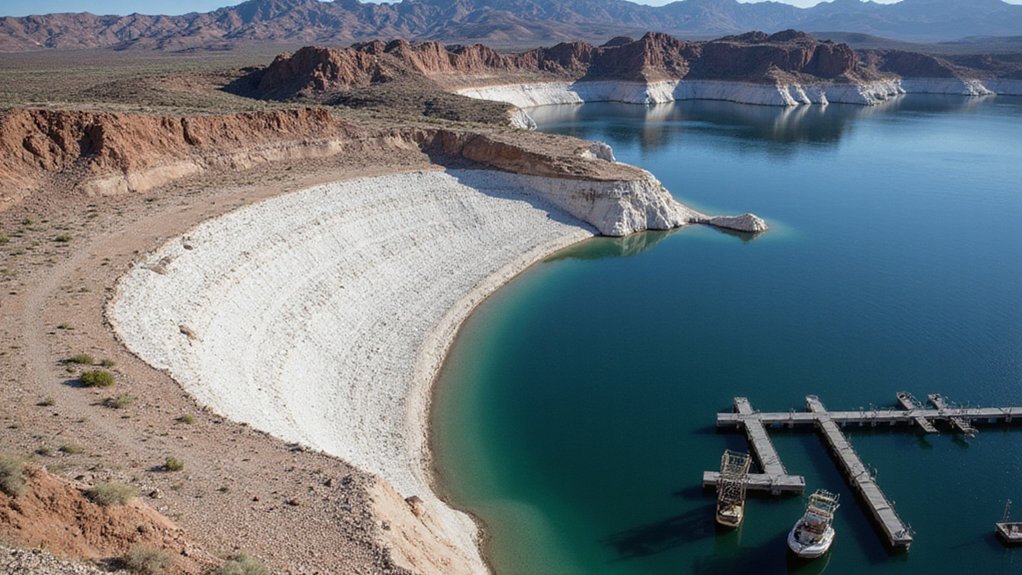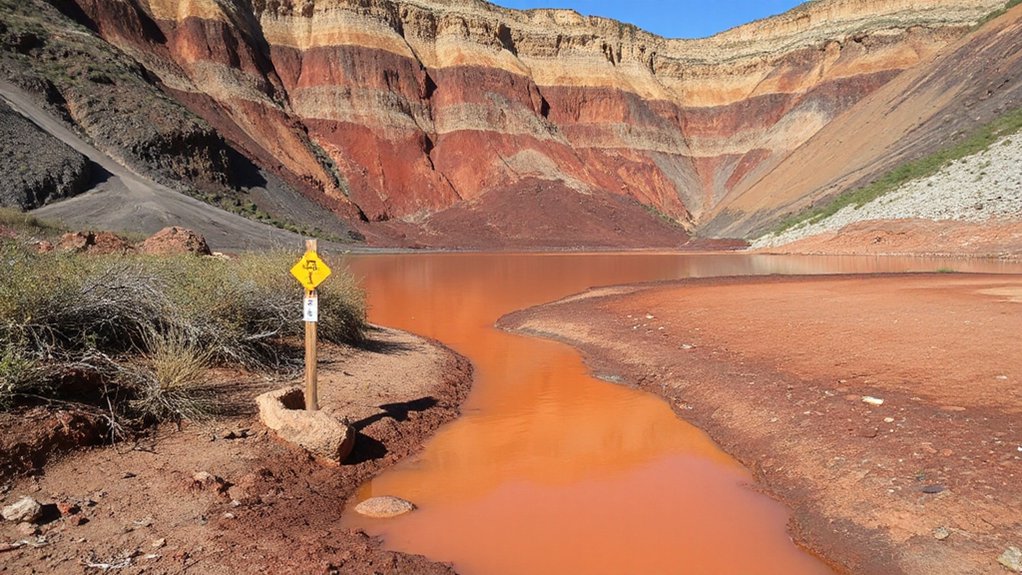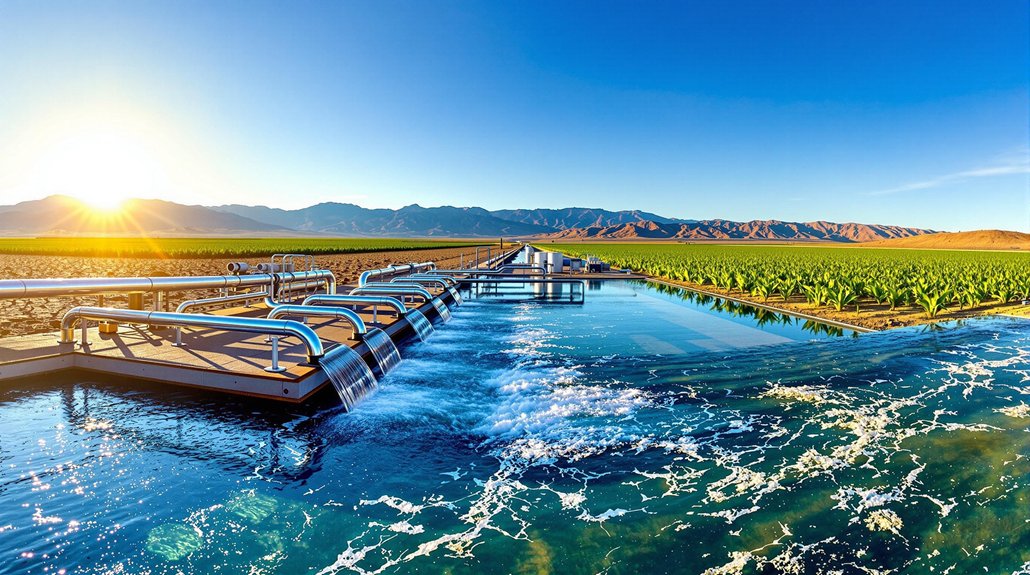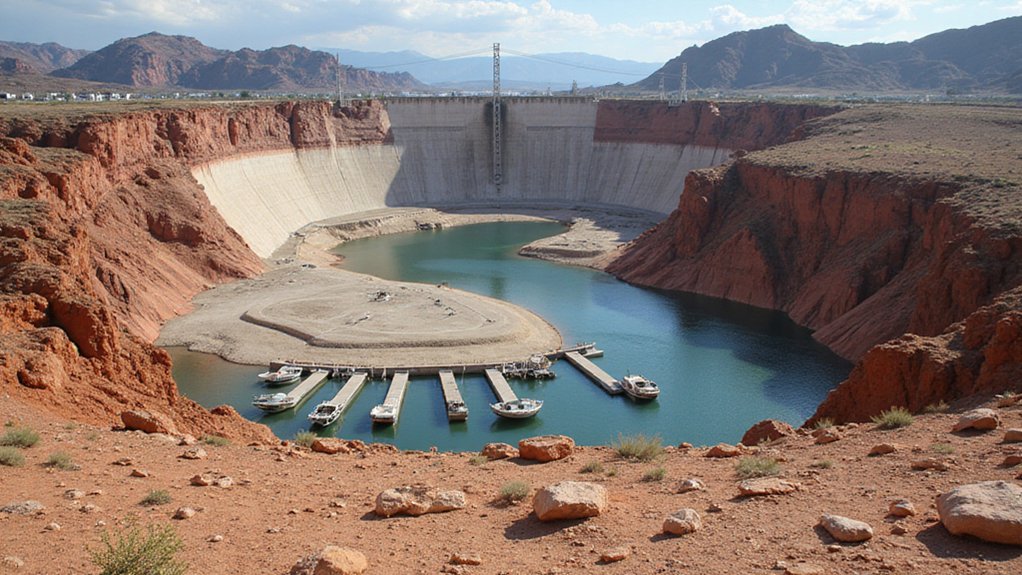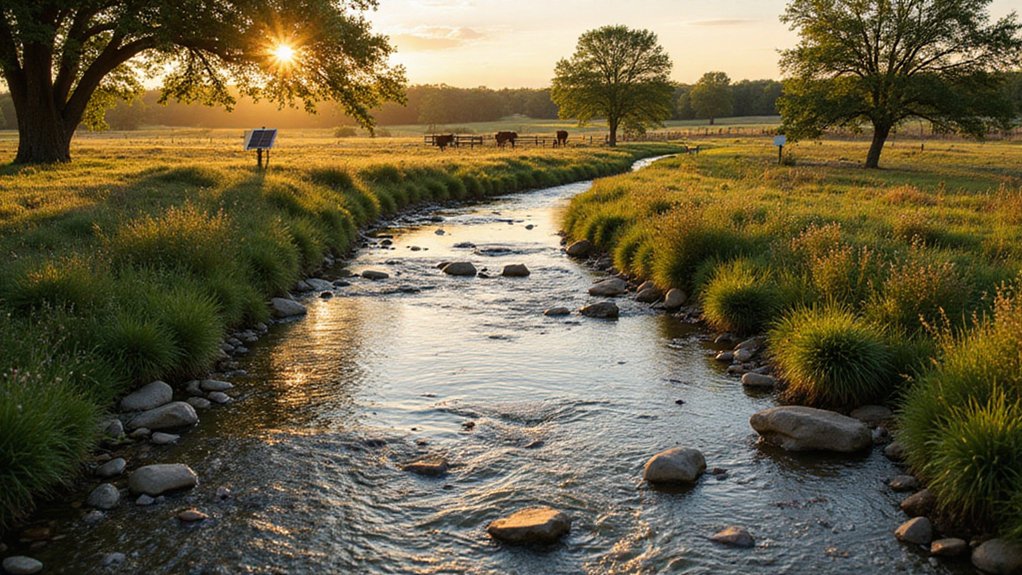As the Southwest continues to grapple with an unprecedented water crisis, Lake Mead’s plummeting levels have reached alarming new lows. The massive reservoir currently stands at a mere 1,061.84 feet above sea level—over 167 feet below its full pool level. That’s not a small dip. That’s a catastrophe in slow motion.
Recent data from May 13, 2025, shows the situation worsening, with water levels dropping to 169.18 feet below capacity. The reservoir is operating at just 33.14% capacity, holding approximately 25.88 million acre-feet. Remember when lakes were supposed to be full of water? Good times.
Lake Mead continues its downward spiral—now a staggering 169 feet below where it should be. Progress? Not on the horizon.
Lake Mead hasn’t seen its full capacity since 1983—over four decades of steady decline. Conservation measures implemented after the record low in June 2021 managed to raise levels by 16 feet over two years. A drop in the bucket, really.
The math simply doesn’t add up. In water year 2025, total inflows reached about 4.27 million acre-feet, while outflows through Hoover Dam exceeded 4.32 million acre-feet. More going out than coming in. Basic arithmetic spells trouble.
Projections offer little comfort. By December 31, 2025, even under the “Probable Maximum” scenario, Lake Mead will likely sit at 1,065.32 feet—still significantly low. The less rosy forecast? A dismal 1,056.86 feet.
This isn’t just about pretty lake views. The reservoir supplies water to approximately 40 million people across seven states and Mexico. Farms, cities, entire economies—all hanging by a thread.
Climate scientists confirmed in February that both Lakes Mead and Powell remain in vital condition, despite slightly improved inflow compared to previous drought years. The Drought Monitor classification currently indicates a Moderate Drought (D1) status for the region, with potential to worsen if conditions don’t improve. The Bureau of Reclamation keeps monitoring and publishing data. Charts, graphs, numbers—all pointing to the same grim reality.
Conservation efforts have helped. A little. But climate change and ongoing drought conditions continue to batter the Southwest’s most essential water resource. If water levels drop below 1,075 feet, it will trigger emergency rationing measures for the seven states dependent on Lake Mead’s water supply. The imbalance persists, and with it, the region’s water security hangs in the balance.
